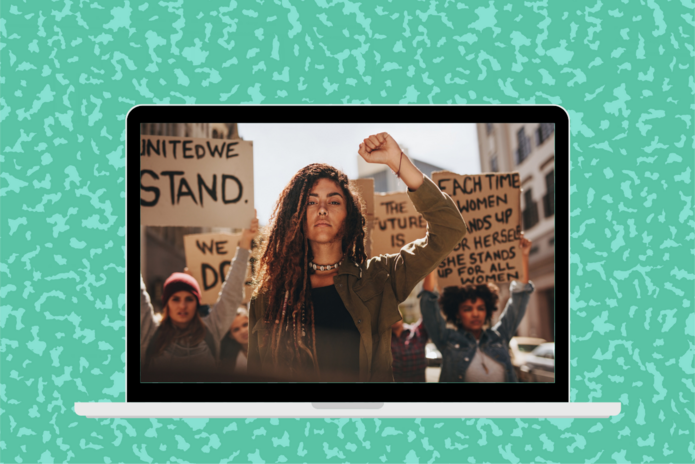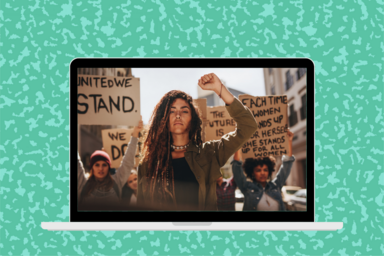As in-person learning ramps back up and campuses fill with students once again, it’s important to know how to avoid performative allyship. Over the past year, the world has witnessed a surge of virtual activism – from social issues to environmental sustainability – followed by an uptick in performative activism on social media. After the killing of George Floyd, Instagram users took to the platform to voice their support of the Black Lives Matter Movement and raise awareness about police brutality in America. Instead of simply glossing it over as just another attack on an African American by a police officer, millions of people united under the same cause and spoke out about these injustices because silence on a matter such as this is synonymous with violence. While hashtags and infographics became popular resources, social media acted as a catalyst for those seeking attention. Those that grew reliant on reposting and forgetting were able to feel like they did their part, without actually taking on any of the work. The social media swell raised two questions: Do users truly support the causes they’re posting about? And how can activism go beyond performance?
What Is Performative Activism?
According to VOXATL, performative activism can be defined as “activism that is done to increase one’s social capital rather than because of one’s devotion to a cause” — aka, jumping on the bandwagon of support for a cause, but not truly contributing to it. An excellent example of performative activism was June 2, 2020’s Blackout Tuesday, a social media movement organized by executives in the music industry as a form of collective action in response to the killing of George Floyd. Many radio stations and TV stations staged a “blackout” where nothing was screened for 8 minutes and 46 seconds, the amount of time police officer Derek Chauvin spent with his knee on George Floyd’s neck. From there, the hashtag #blackouttuesday began trending all over social media.
While some continued to share petitions to arrest the cops that killed George Floyd, Breonna Taylor, and many others, millions of other users co-opted Black Out Tuesday by taking to social media and posting a black square along with #blacklivesmatter, which flooded the hashtag with spam instead of helpful resources to support the Black community. Beyond virtue signaling, the Instagram participants of Blackout Tuesday only succeeded at clogging their followers’ feeds. As a result, users were able to pat themselves on the back for their “activism,” then withdraw without contributing any real action. Although the intent was to support the Black Lives Matter movement, the repercussions likely outweighed any of the benefits, further harming the community.
Related Article: 22 Ways to Support the Black Lives Matter Movement If You Can’t Donate Money
What’s Wrong With Performative Activism?
While reposting an infographic can help provide resources or help spread awareness, there’s no way of measuring its impact beyond social reach. Did everyone who posted the black square truly care about saving Black lives, or did they want to take part in a trend? If the latter is true, sharing donation links or passing around petitions would have better directly benefited the Black community. While not everyone has the ability to go out and protest or march, you can still make a tangible difference by providing accessible information.
Reposting without consuming the information you’re sharing can also come across as hypocritical. On May 29, 2020, actress Lea Michelle Tweeted about her support for BLM and was promptly called out by her former co-stars – including Amber Riley – for racist actions while filming Glee. In other words, Michelle’s behavior IRL didn’t match her performance online.
Related Article: Six Ways You Can Help Combat Asian Violence
Activism On Campus
At the start of back-to-school season, take the opportunity to think about getting involved in activism in your campus community. Instead of falling into the trap of performative activism in order to join a certain crowd, be honest with yourself. If there’s a cause you support, find the appropriate avenues to have your actions enact change.
There’s a variety of ways to support different movements that go beyond a simple repost to your feed or story. An easy, free, and popular way to get involved is by signing and circulating petitions supporting calls to action for causes that need it. Change.org creates and discovers different petitions on a variety of organizations. Additionally, you can attend events on or around campus, such as marches and peaceful protests, to physically show your support and join others who support these causes.
Anna,* 25, has been to a number of peaceful protests for dozens of different movements. As a member of the Asian American Pacific Islander Community who supports the #StopAsianHate movement, she suggests donating to different causes that matter to you, if you have the means. “Donate to legitimate organizations that are funding communities in need, such as the Trevor Project that supports LGBTQIA+ youth, or search GoFundMe for families raising money after losing their loved one to police brutality or racism,” she tells Her Campus. Additionally, bail funds collect money to bail out peaceful protestors who are wrongfully arrested.
Anna also suggests calling or emailing your representatives and asking them to take decisive action on legislation to change our justice system.“If enough people tell their legislators what they want and pressure them enough to take action, we can enact real change,” she says. The best part? You can contact your representatives from home and school, pushing for change in both of your areas of residence.
On-campus, you can also start or join any groups that share your values, meeting people, and educating others as to why they should also support your cause. Being active on campus is a great way to enact positive change right where you live and learn, encouraging faculty to take action against things that negatively impact the livelihood of students and the university. For example, after a Georgetown professor went viral for her racist remarks against Black students, students banded together and forced her to resign. Moreover, UC students formed a union to improve working conditions and compensation for graduate researchers. You can even organize around something as small as a petition, like contacting administrators to add more allergen-friendly options on campus or providing more transportation around campus for disabled students.
Little changes can make a large impact, and there are so many different avenues where your time or money can make a difference. Just do your research beforehand.
Taking Corrective Action
Have you participated in performative activism in the past? Here’s how you can take accountability for it: Call it out. “Politely message that person and be upfront,” Anna says. “Whether they really believe in what they’re posting, if you see some contradicting posts or information from them, call it as you see it. Tell them how it makes you feel and suggest to them ways they could actually contribute if they genuinely believe in the cause. You aren’t hurting anyone by suggesting better ways for them to make a change and encouraging them to see the error of their ways.”
At the end of the day, activism comes down to your beliefs, decisions, and how you’re personally putting them into practice. A simple share isn’t enough. So, before you repost that infographic to your Instagram story, ask yourself: Am I truly making a difference?
*Names have been changed.


